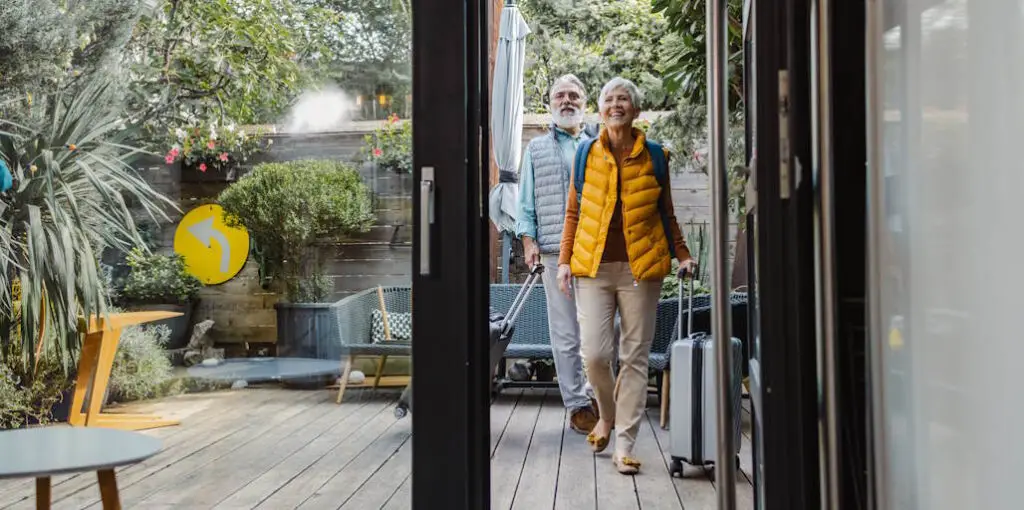Airbnb has revolutionized the hospitality industry since its inception in 2008. By offering a platform where property owners can rent out their homes, apartments, or even unique stays like treehouses and yurts, Airbnb has become a popular alternative to traditional hotels. One critical metric for hosts and investors in the Airbnb market is the average occupancy rate, which indicates how often a property is rented out. This article delves into the factors affecting Airbnb occupancy rates, recent trends, and how hosts can optimize their listings for higher occupancy.
What is Occupancy Rate?
Occupancy rate is a measure of how often a property is rented out over a specific period. It is usually expressed as a percentage, calculated by dividing the number of nights a property is booked by the total number of nights it is available. For example, if a property is booked for 15 nights out of a 30-day month, its occupancy rate for that month is 50%.
Factors Influencing Airbnb Occupancy Rates
Location: Properties in popular tourist destinations or bustling city centers tend to have higher occupancy rates. Proximity to attractions, public transport, and amenities also play a significant role.
Seasonality: Demand for Airbnb rentals often varies with seasons. For instance, beachside properties may see higher occupancy in summer, while ski lodges peak during winter.
Pricing: Competitive pricing is crucial. Listings that are priced too high may deter potential guests, while those priced too low may not cover the host’s costs. Dynamic pricing strategies, which adjust rates based on demand, can help optimize occupancy.
Listing Quality: High-quality photos, detailed descriptions, and positive reviews can significantly boost a property’s attractiveness. Listings that are well-maintained and accurately represented tend to have higher occupancy rates.
Amenities and Services: Offering desirable amenities such as Wi-Fi, air conditioning, kitchen facilities, and parking can increase a property’s appeal. Additional services like airport pickups or guided tours can also attract more guests.
Marketing and Visibility: Effective marketing, including social media promotion and search engine optimization (SEO) for listings, can enhance visibility and attract more bookings.
Recent Trends in Airbnb Occupancy Rates
The COVID-19 pandemic had a profound impact on the travel and hospitality industry, including Airbnb.
Initially, occupancy rates plummeted due to travel restrictions and health concerns. However, as restrictions eased and remote work became more prevalent, a shift occurred. Many people started seeking long-term stays in remote or rural locations, leading to a surge in bookings for properties in these areas.
In 2023, Airbnb reported a notable increase in occupancy rates, driven by a combination of factors:
Work-from-Anywhere Trend: With many companies adopting flexible work policies, more people are choosing to work remotely from different locations. This has increased demand for longer stays in non-urban areas.
Domestic Travel: With international travel restrictions in place, domestic tourism saw a significant boost. Many travelers opted for road trips and local getaways, benefiting nearby Airbnb listings.
Health and Safety Measures: Airbnb implemented enhanced cleaning protocols, which reassured guests and boosted bookings. Properties that highlighted their adherence to these protocols often experienced higher occupancy rates.
Optimizing Airbnb Listings for Higher Occupancy
Hosts looking to improve their occupancy rates can consider the following strategies:
Dynamic Pricing: Utilize tools and services that offer dynamic pricing to adjust rates based on demand, competition, and other factors.
Enhance Listing Quality: Invest in professional photography, write detailed and honest descriptions, and highlight unique features of the property.
Respond Promptly: Quick responses to inquiries and booking requests can improve booking rates and lead to positive reviews.
Maintain High Standards: Ensure the property is clean, well-maintained, and stocked with essential supplies. Positive guest experiences lead to good reviews and repeat bookings.
Leverage Social Media: Promote the property on social media platforms and encourage satisfied guests to share their experiences.
Adapt to Trends: Stay informed about travel trends and adjust marketing strategies accordingly. For instance, if remote work continues to be popular, consider offering discounts for long-term stays.
Understanding and optimizing occupancy rates is crucial for Airbnb hosts aiming for profitability and success.
By considering factors such as location, pricing, listing quality, and staying abreast of market trends, hosts can enhance their property’s appeal and achieve higher occupancy rates. As the travel landscape continues to evolve, flexibility and adaptability will be key to thriving in the competitive Airbnb market.
Future Outlook for Airbnb Occupancy Rates
The future of Airbnb occupancy rates will be shaped by several key trends and developments:
Sustainability and Eco-Friendly Travel: As travelers become more environmentally conscious, properties that emphasize sustainability and eco-friendly practices are likely to attract more guests. This includes offering recycling options, using energy-efficient appliances, and sourcing local products.
Technological Integration: Smart home technology, such as keyless entry, smart thermostats, and voice-activated assistants, can enhance the guest experience and make properties more appealing. Hosts who integrate these technologies may see higher occupancy rates.
Experiential Travel: Travelers increasingly seek unique and memorable experiences. Properties that offer distinctive features or activities, such as guided hikes, cooking classes, or cultural tours, can stand out and attract more bookings.
Health and Safety Concerns: Even as the pandemic subsides, health and safety will remain a priority for travelers. Properties that continue to uphold high standards of cleanliness and communicate their efforts effectively will likely maintain higher occupancy rates.
Economic Factors: Economic conditions, such as inflation, currency exchange rates, and consumer spending trends, will impact travel behavior. Hosts need to stay attuned to these factors and adjust their pricing and marketing strategies accordingly.
Case Studies: Success Stories in Maximizing Occupancy Rates
Case Study 1: Urban Loft in New York City
An urban loft in NYC faced stiff competition from numerous other listings. The host implemented a dynamic pricing strategy and invested in professional photography to showcase the loft’s modern design and central location. Additionally, they highlighted the property’s proximity to key attractions and provided local recommendations. As a result, the loft’s occupancy rate increased from 60% to 85% over six months.
Case Study 2: Coastal Cottage in Cornwall
A coastal cottage in Cornwall saw seasonal fluctuations in occupancy. The host addressed this by promoting the property as a year-round destination, emphasizing activities like winter coastal walks and cozy indoor amenities such as a fireplace. They also offered discounts for longer stays during off-peak months. This approach led to a 20% increase in annual occupancy rates.
Airbnb occupancy rates are influenced by a multitude of factors, from location and pricing to listing quality and market trends. Hosts who understand these dynamics and continuously adapt their strategies are well-positioned to achieve high occupancy rates. As the travel industry evolves, staying informed and proactive will be essential for maintaining a competitive edge in the Airbnb market.
For hosts and investors, the key takeaways are:
Stay Flexible: Adapt to changing travel trends and guest preferences.
Invest in Quality: High-quality listings with accurate descriptions and appealing visuals attract more bookings.
Leverage Technology: Utilize tools for dynamic pricing and integrate smart home technologies to enhance the guest experience.
Prioritize Cleanliness and Safety: Maintain high standards to reassure guests and encourage repeat bookings.
Promote Unique Experiences: Highlight distinctive features and local experiences to stand out from the competition.
By focusing on these areas, Airbnb hosts can optimize their occupancy rates and ensure their properties remain attractive and profitable in an ever-changing market.







